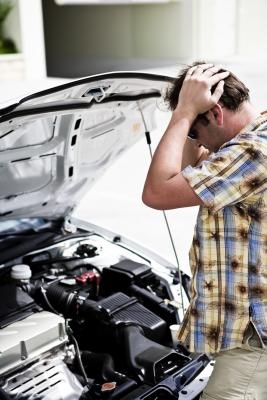
The exhaust gas recirculation (EGR) valve is a part of the vehicle exhaust system found in most North American car and light truck motors. The EGR system extracts gases from the exhaust system and recirculates them through the intake manifold and back through the combustion system.
A faulty EGR valve can cause a motor to stall or idle rough. In severe cases, acceleration can be impeded. The most common cause of EGR failure is carbon buildup. For these reasons, EGR valve replacement will likely be required at some point.
Vacuum hoses are color-coded green. For protection purposes, hoses may be inside a ribbed black sheathing and the green line will only be visible at the ends. Locate the green hose coming out of the engine solenoid and follow it to the EGR valve. The valve is near the top of the motor, usually toward the center-rear. It is the size of a saucer and shaped like the top half of a 1950s sci-fi move flying saucer.
The green vacuum hose from the solenoid attaches to the EGR by means of a metal nipple. Remove the vacuum hose from the nipple of the valve. Remove the pipe that runs from under the valve toward the rear of the vehicle. The valve is now free to be removed. It is affixed to the manifold by means of two bolts. Be careful not to lose the gasket that insulates the seam between the valve and the manifold.